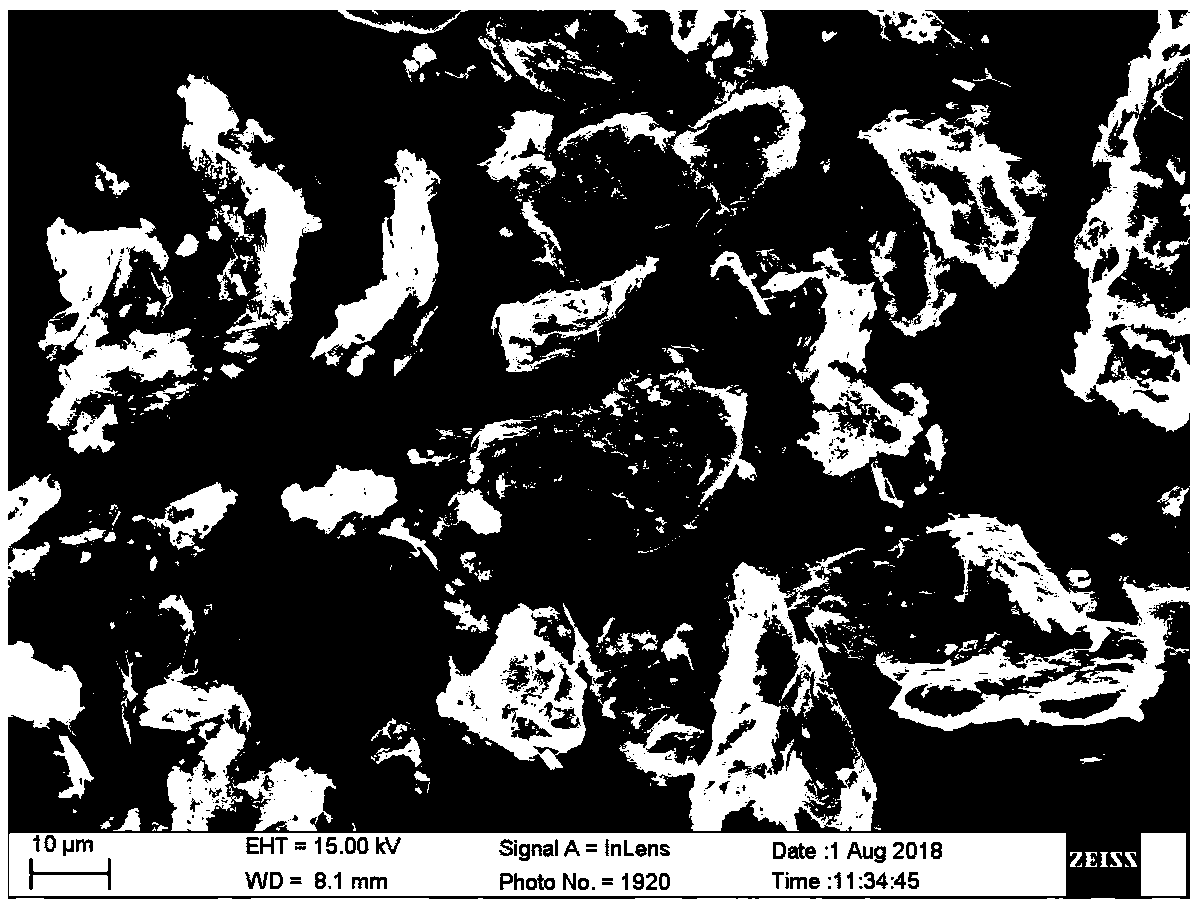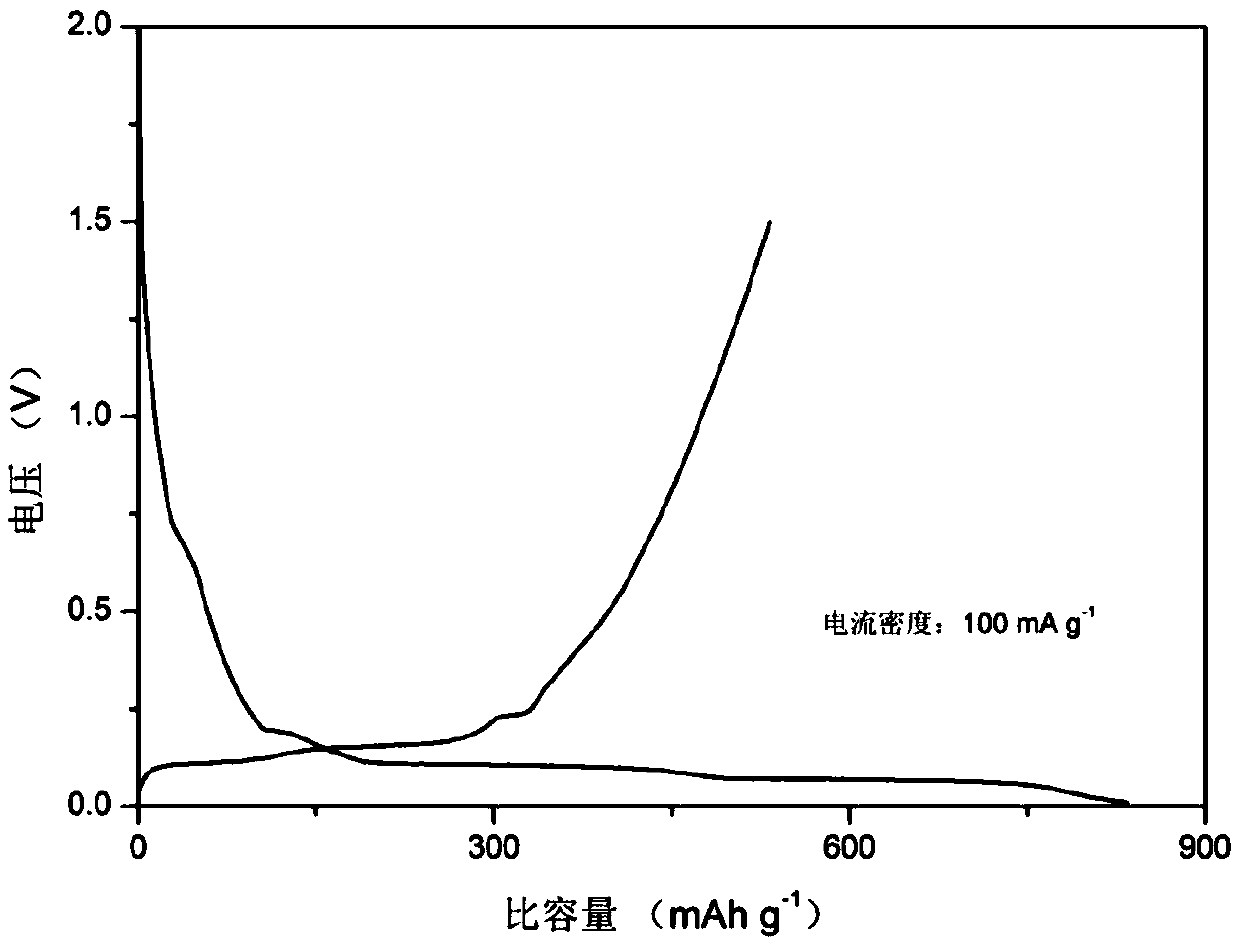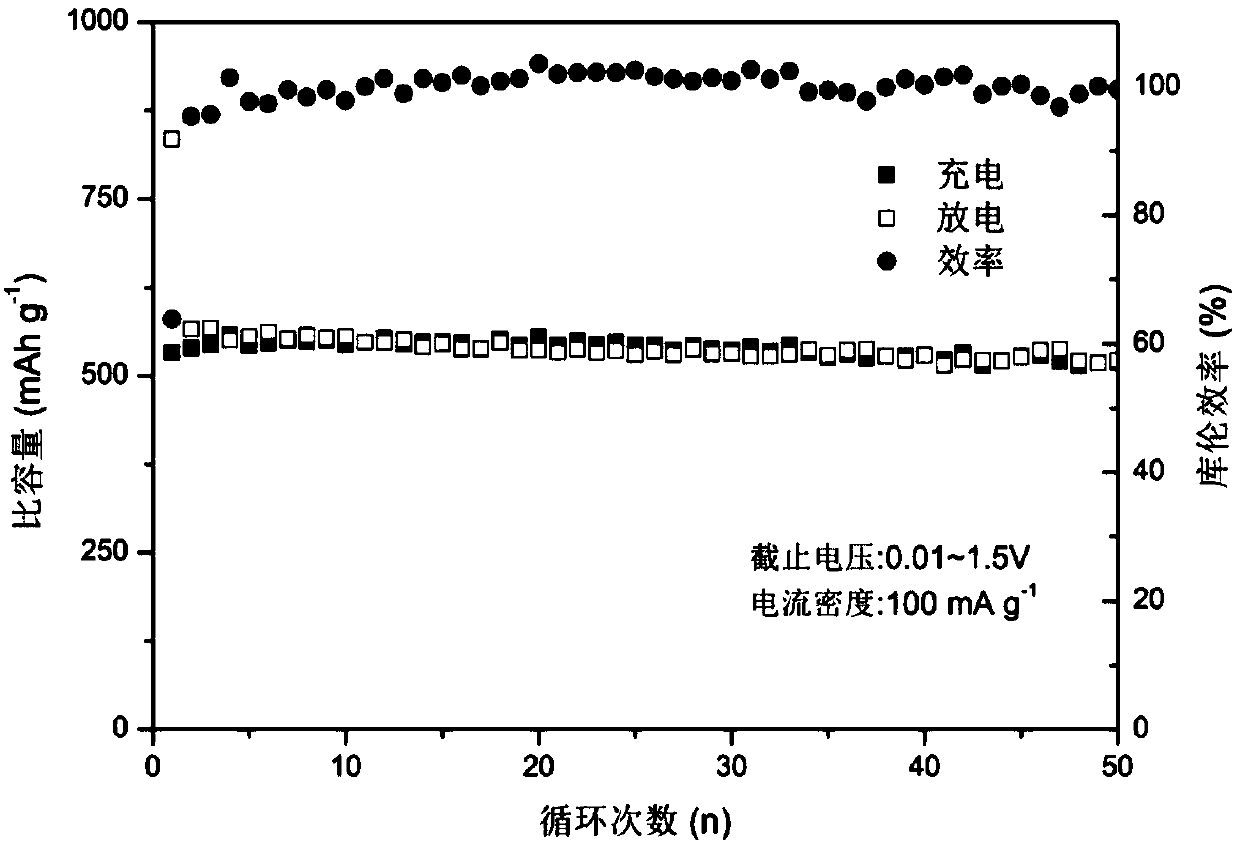Preparation method of lithium ion battery negative electrode material silicon oxide-carbon/graphite
A lithium ion battery, silicon oxide technology, applied in battery electrodes, secondary batteries, electrochemical generators, etc., to improve electrochemical performance, enhance electronic conductivity, and facilitate industrial mass production.
- Summary
- Abstract
- Description
- Claims
- Application Information
AI Technical Summary
Problems solved by technology
Method used
Image
Examples
Embodiment 1
[0030] Weigh 2.08g of tetraethyl orthosilicate and dissolve it in 4mL of ethanol, stir for a while, then add 2mL of deionized water and 1mL of hydrochloric acid into it to obtain a mixed solution A. After the mixture A was vigorously stirred for 1 hour, a silica sol was obtained, and the pH of the sol was adjusted to 6.5 with 1M ammonia water, and the stirring was continued for a period of time to obtain a silica gel.
[0031] Weigh 1.98g of graphite powder and disperse it in 70mL of deionized water. After ultrasonically stirring for a period of time, weigh 0.6g of sucrose, add it to the graphite powder dispersion, and stir until completely dissolved to obtain a mixed solution B.
[0032] Add the mixed solution B into the silicone gel, and after stirring for a period of time, a silicon-oxygen-sucrose-graphite black gel is obtained. The black gel was transferred to a ball mill jar, the ball milling speed was 300 rpm, and the ball milling time was 3 hours. The ball milled black ...
Embodiment 2
[0038] Weigh 4.16g of tetraethyl orthosilicate and dissolve it in 8mL of ethanol, stir for a while, then add 13mL of deionized water and 2mL of hydrochloric acid into it to obtain a mixed solution A. After the mixture A was vigorously stirred for 1 hour, a silica sol was obtained, and the pH of the sol was adjusted to 6.5 with 1M ammonia water, and the stirring was continued for a period of time to obtain a silica gel.
[0039] Weigh 2.08g of graphite powder and disperse it in 70mL of deionized water. After ultrasonically stirring for a period of time, weigh 2g of sucrose, add it to the graphite powder dispersion, and stir until completely dissolved to obtain a mixed solution B.
[0040] Add the mixed solution B into the silicone gel, and after stirring for a period of time, a silicon-oxygen-sucrose-graphite black gel is obtained. The black gel was transferred to a ball mill jar, the ball milling speed was 400 rpm, and the ball milling time was 1 hour. The ball milled black ge...
Embodiment 3
[0045] Weigh 4.16g of tetraethyl orthosilicate and dissolve it in 5mL of ethanol, stir for a while, then weigh 5mL of deionized water and 2mL of hydrochloric acid and add it to obtain a mixed solution A. After the mixture A was vigorously stirred for 1 hour, a silica sol was obtained, and the pH of the sol was adjusted to 6.5 with 1M ammonia water, and the stirring was continued for a period of time to obtain a silica gel.
[0046] Weigh 6g of graphite powder and disperse it in 80mL of deionized water. After ultrasonically stirring for a period of time, weigh 1.2g of sucrose, add it to the graphite powder dispersion, and stir until completely dissolved to obtain a mixed solution B.
[0047] Add the mixed solution B into the silicone gel, and after stirring for a period of time, a silicon-oxygen-sucrose-graphite black gel is obtained. The black gel was transferred to a ball mill jar, the ball milling speed was 200 rpm, and the ball milling time was 5 hours. The ball milled blac...
PUM
| Property | Measurement | Unit |
|---|---|---|
| current efficiency | aaaaa | aaaaa |
| current efficiency | aaaaa | aaaaa |
| current efficiency | aaaaa | aaaaa |
Abstract
Description
Claims
Application Information
 Login to View More
Login to View More - R&D
- Intellectual Property
- Life Sciences
- Materials
- Tech Scout
- Unparalleled Data Quality
- Higher Quality Content
- 60% Fewer Hallucinations
Browse by: Latest US Patents, China's latest patents, Technical Efficacy Thesaurus, Application Domain, Technology Topic, Popular Technical Reports.
© 2025 PatSnap. All rights reserved.Legal|Privacy policy|Modern Slavery Act Transparency Statement|Sitemap|About US| Contact US: help@patsnap.com



